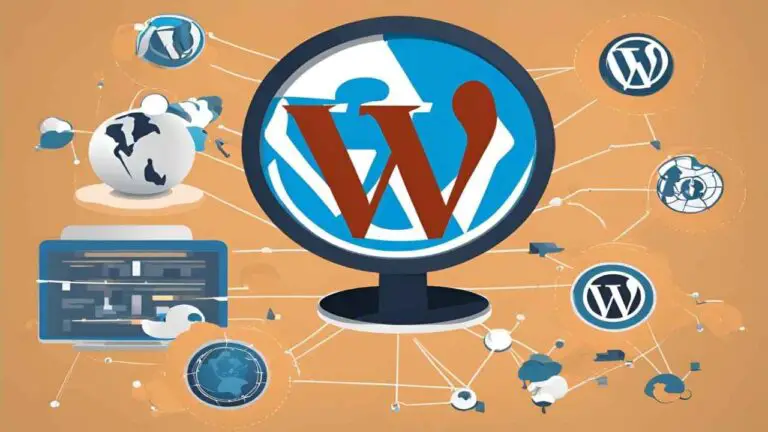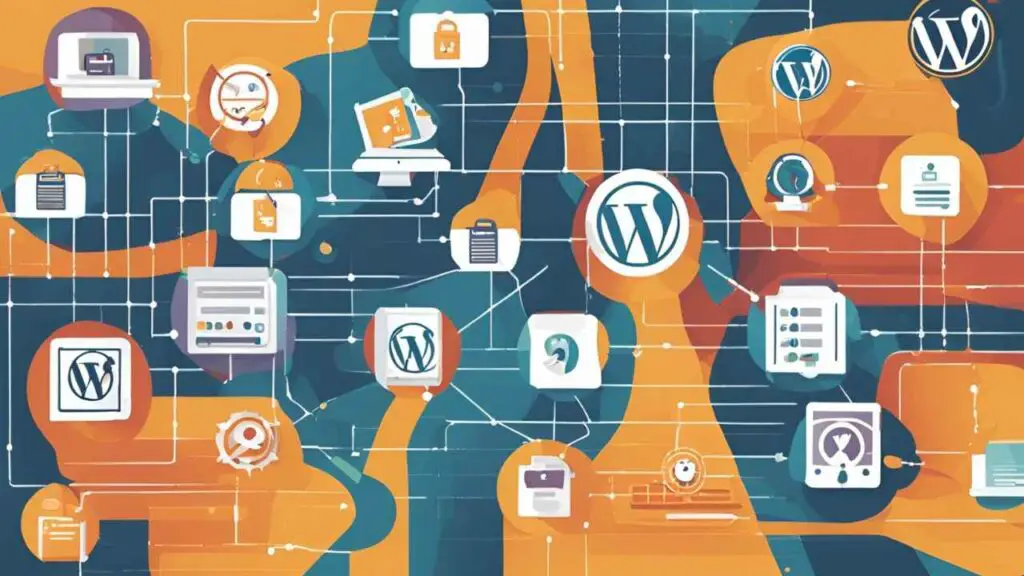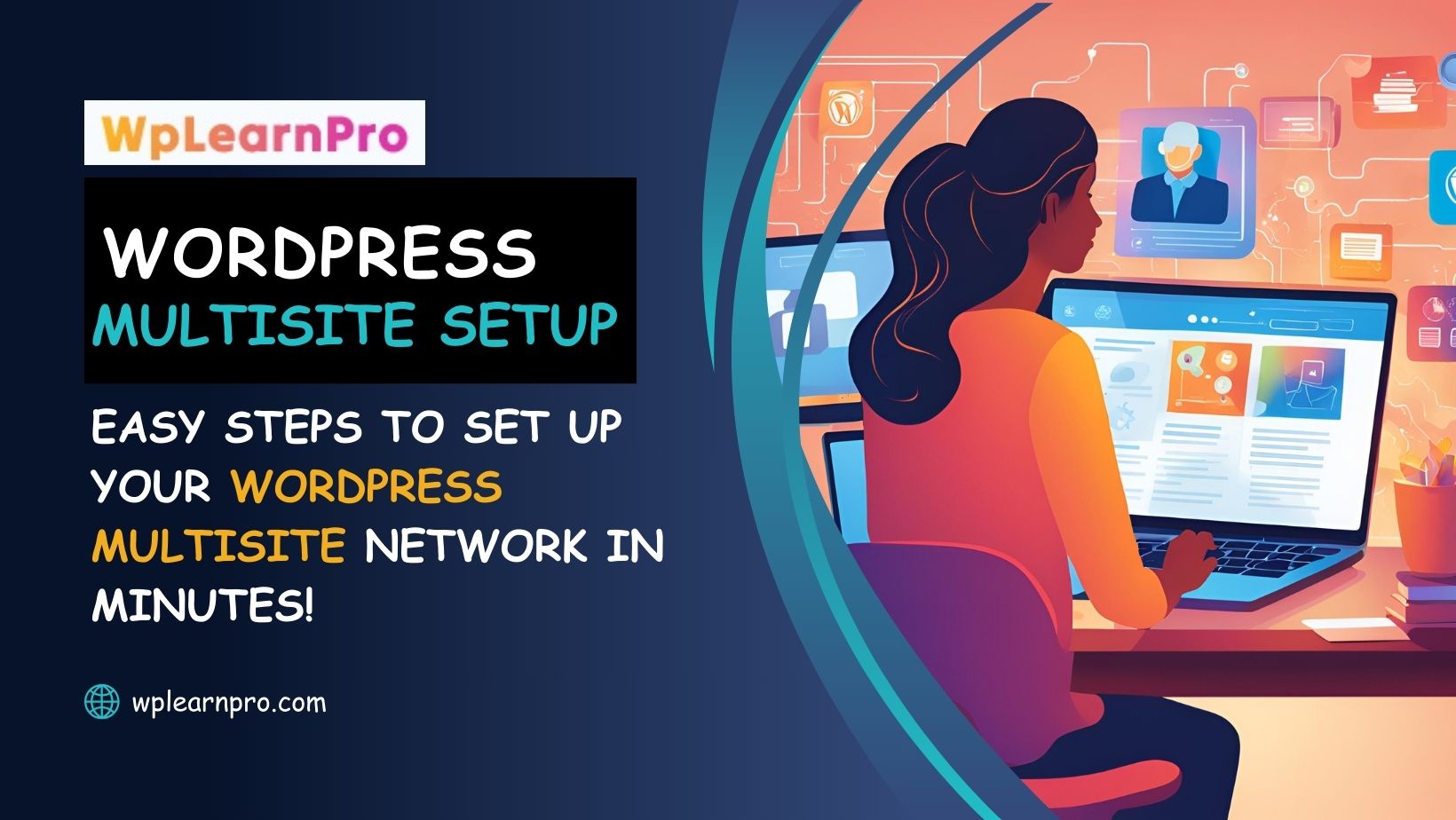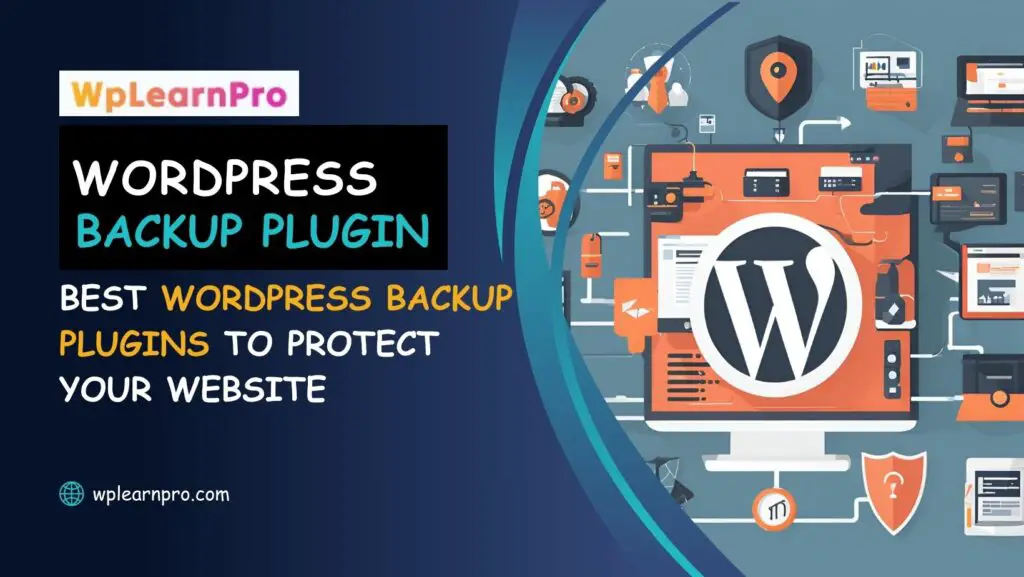WordPress Multisite setup is a powerful feature that allows you to run multiple sites from a single WordPress installation. It is a great solution for businesses, bloggers, or any organization that needs to manage a collection of websites efficiently.
This tool enables users to operate multiple websites from a single WordPress installation, streamlining the management of various sites through a unified dashboard.
Table of Contents
ToggleIntroduction
A WordPress Multisite Network is essentially a network of websites connected under a single WordPress installation. It allows administrators to manage several sites while utilizing the same core files, themes, and plugins. This means you can save time and resources by applying global changes to all sites at once.
WordPress Multisite can save you time and effort. In this comprehensive guide, we will walk you through how to set up a WordPress Multisite network, providing you with detailed steps and helpful tips.
What is WordPress Multisite setup?
WordPress Multisite setup allows you to create a network of sites that share the same WordPress installation but have different domains or directories.
Whether you’re managing a group of websites for a company, a university, or just multiple blogs, the multisite network simplifies site management by allowing for centralized control.
With one login, you can access all your sites, install themes and plugins for the entire network, and assign administrative privileges to each site separately.
This feature is perfect for businesses or organizations that need to manage multiple websites but don’t want the hassle of installing separate WordPress setups for each one.
Instead, all sites share the same core files, but each can have its own unique content and settings.

Benefits of Using a WordPress Multisite
Here are some of the benefits:
- Centralized Management: Manage multiple websites from a single dashboard.
- Shared Resources: All sites share the same core files, saving space and resources.
- User Control: Create a super admin who has control over the entire network, while individual admins can manage their own sites.
- Easier Updates: Update WordPress, themes, and plugins just once for the entire network.
- Scalability: Easily add new sites to your network without needing a new WordPress installation.
Managing Multiple Sites from One Dashboard
A key advantage of setting up a WordPress Multisite Network is the ability to manage multiple sites from one central location. This is especially helpful for businesses or individuals running several related websites. It simplifies tasks like updates, backups, and user management.
Shared Plugins and Themes
In a Multisite setup, plugins and themes can be installed once and then shared across all the sites. This feature reduces redundancy and ensures consistency across the network.
Centralized User Management
Managing user roles and permissions becomes much easier on a Multisite Network. You can assign specific roles to users on individual sites or across the network, allowing for a more structured and organized user system.
Is WordPress Multisite Right for You?
Before diving into the setup, it’s essential to determine whether WordPress Multisite is the right solution for your needs. Here are a few scenarios where Multisite makes sense:
- Multiple Blogs or Websites: If you’re running multiple blogs or websites and want to manage them from a single interface.
- Educational Institutions: Schools and universities can use Multisite to host different departments or student blogs.
- Businesses with Multiple Locations: Companies with regional branches can benefit from having individual sites for each location under one network.
- SaaS Applications: If you’re offering a service where users can create their own websites.
However, Multisite might not be the best option if:
- You need completely isolated sites with different server configurations.
- You want each site to have a different set of plugins or themes.
- You’re not comfortable managing a more complex setup.

Prerequisites for WordPress Multisite Network
Before you can set up a WordPress Multisite Network, there are a few requirements you need to meet.
Hosting Requirements
Not all hosting providers support WordPress Multisite, so it’s essential to check if your hosting plan is compatible. Ideally, you should have a VPS, dedicated server, or cloud hosting because multisite can be resource-heavy, especially if you plan to host several websites.
WordPress Installation
A clean or existing WordPress installation is needed to activate the Multisite feature. You should always back up your site before making significant changes.
Plugin Compatibility
Ensure that any plugins you plan to use are compatible with Multisite. Some plugins may not function properly across a network of sites.
Domain Considerations
You can set up your multisite network to use subdomains (site1.yourdomain.com) or subdirectories (yourdomain.com/site1). Choose the one that best fits your needs and ensure your hosting provider supports your choice.
Step-by-Step Guide to Enable WordPress Multisite
Before you can set up a WordPress Multisite Network, there are a few requirements you need to meet.
Backing Up Your Site
Before you make any changes, create a full backup of your WordPress site. This ensures that you can quickly restore your site if something goes wrong.
Editing the wp-config.php File
To enable Multisite, you’ll need to edit the wp-config.php file. Open the file in a text editor and add the following line above the “/* That’s all, stop editing! Happy blogging. */” comment:
define( 'WP_ALLOW_MULTISITE', true );
Save the changes and upload the file back to your server.
Installing WordPress Multisite
After enabling Multisite in the wp-config.php file, you can now go to the WordPress dashboard. Under the “Tools” menu, you’ll see an option called “Network Setup.” Click on it to begin the installation process.
Setting Up Subdomains or Subdirectories
When setting up a WordPress Multisite Network, you must decide between using subdomains or subdirectories.
Understanding the Difference Between Subdomains and Subdirectories
- Subdomains: Each site has its own subdomain, like
site1.yourdomain.com. - Subdirectories: Each site is a directory under your main domain, like
yourdomain.com/site1
Pros and Cons of Each Setup
Subdomains: Each site is treated as a separate entity (e.g., site1.example.com), which is helpful if the sites need different branding.
- Pros: Better for SEO if sites are targeting different topics; clear separation between sites.
- Cons: Requires proper DNS configuration; can be harder to manage if you have many sites.
Subdirectories: Each site exists under the same domain (e.g., example.com/site1), making it easier to manage.
- Pros: Easier to set up; no need for additional DNS configuration.
- Cons: SEO might be less effective if each site targets different keywords.
When to Choose Subdomains vs Subdirectories
Subdomains are ideal when you want each site to function almost independently, with its own branding, SEO strategies, and user experience.
On the other hand, subdirectories are suitable for related sites that share content or target similar audiences.

Configuring Network Settings
Network Admin Dashboard Overview
Once the network is installed, you’ll have access to a new “Network Admin” dashboard. From here, you can manage all the sites, themes, and plugins across your network.
Configuring Basic Settings
Go to the “Settings” section in the Network Admin dashboard to configure key options, such as site registration, email notifications, and upload limits.
Adding New Sites to Your Network
How to Add Sites Manually
In the Network Admin dashboard, go to “Sites” and click “Add New.” Fill in the site details and click “Add Site.”
Allowing Users to Create Their Own Sites
You can enable site registration so that users can create their own sites on your network. Go to “Settings” and enable “User registration” for the network.
Managing Themes and Plugins in a Multisite Network
With a Multisite network, you can control which themes and plugins are available to all your sites.
Activating Themes for the Network
Themes can be activated for the entire network or for individual sites. In the Network Admin dashboard, go to “Themes” and choose which themes to enable.
Managing Plugins Across Multiple Sites
Plugins can be network-activated or activated on a per-site basis. If you network-activate a plugin, it will be active on all sites within the network.
User Management in WordPress Multisite
Managing user roles in a Multisite network can be more complex. WordPress offers various levels of administrative control:
- Super Admin: Has full control over the network and all sites.
- Site Admin: Has control over their specific site but cannot install themes or plugins.
Adding and Managing Users
In WordPress Multisite, you can assign users to individual sites or the entire network. You can also assign different roles, such as administrator, editor, or contributor.
Setting User Permissions Across the Network
User roles can vary across sites, allowing you to have more control over who manages content or settings in each part of the network.
Domain Mapping: Pointing Custom Domains to Specific Sites
What is Domain Mapping?
Domain mapping allows individual sites within a WordPress Multisite Network to use custom domain names instead of the default subdomains or subdirectories.
For instance, instead of using site1.example.com, you can map a custom domain like site1.com to that specific site.
Steps to Map Domains in Multisite
To map a domain to a site within your WordPress Multisite Network:
- Install the Domain Mapping Plugin: Use a plugin like WordPress MU Domain Mapping.
- Configure DNS Settings: Point the custom domain to your network’s primary domain using an A record or CNAME.
- Map the Domain: In your WordPress dashboard, go to My Sites > Network Admin > Domains and add the custom domain for the specific site.
Once configured, visitors can access the site using the custom domain rather than a subdomain or subdirectory.
Backup and Security Considerations for Multisite
Backup Strategies for Multisite
Regular backups are crucial, especially for Multisite. Consider using a backup plugin that supports Multisite, or configure server-side backups.
Security Plugins and Measures for Multisite
Security is even more important in a Multisite network because a vulnerability in one site can affect the others. Use a reliable security plugin and enforce strong passwords across the network.
Optimizing Performance for WordPress Multisite
Backup Strategies for Multisite
Caching can significantly improve performance on a Multisite network. Consider using a network-wide caching plugin to ensure all sites load quickly.
Performance Plugins
Performance plugins can help optimize your database, minify CSS and JavaScript, and compress images across the network.
Database Optimization
A large Multisite network can slow down over time. Regularly optimize your database to keep things running smoothly.
Maintenance and Troubleshooting
Managing a Multisite network requires regular maintenance and monitoring. Here are a few things to keep in mind:
- Backups: Always maintain regular backups of your network. Use plugins like UpdraftPlus or VaultPress for multisite backups.
- Performance: Multisite networks can be resource-intensive. Consider using a caching plugin like W3 Total Cache to improve site performance.
- Security: Keep your WordPress installation, themes, and plugins updated to ensure security. Using a security plugin like Wordfence or Sucuri can help protect your network.
Error Messages and How to Fix Them
Some common Multisite errors include issues with domain mapping, plugin conflicts, or site registration. Checking error logs and disabling plugins one by one can help pinpoint the problem.
Common Problems with Domain Mapping and Plugins
Domain mapping issues often arise due to incorrect DNS settings, while plugin problems can occur if a plugin isn’t Multisite-compatible. Always ensure your settings and plugins are configured correctly.
Best Practices for Multisite Management
Managing a WordPress Multisite Network requires careful planning and regular maintenance to keep things running smoothly.
Regular Monitoring and Maintenance
To ensure your network remains secure and efficient, it’s important to regularly monitor performance and take preventative measures:
- Update Themes and Plugins: Regularly update all plugins and themes across your network to ensure compatibility and security.
- Check Site Performance: Use tools like Google PageSpeed Insights or GTmetrix to monitor the loading speed of each site in your network.
- Monitor Security Logs: Keep an eye on security plugin logs to catch potential hacking attempts or unauthorized login attempts.
User Role Management
Since a Multisite Network may involve many users with varying levels of access, you need to consistently manage user roles and permissions. Super Admins have the highest level of control, while individual site admins have more limited privileges.
Periodically review and adjust roles to ensure that users only have access to the areas they need.
Conclusion
Setting up a WordPress Multisite network is a fantastic way to manage multiple websites efficiently from one dashboard. Whether you’re running a blog network, managing a business, or hosting sites for others, Multisite offers scalability, flexibility, and centralized control.
Whether you choose subdomains or subdirectories, WordPress Multisite provides a flexible and powerful platform for growing your online presence.
By following this guide, you’ll be able to configure and optimize your network for performance, security, and scalability.
From enabling the Multisite feature to managing plugins, themes, and users, every aspect of a Multisite Network can be tailored to meet your needs.
Frequently Asked Questions (FAQs)
What is the primary benefit of using a WordPress Multisite Network?
The primary benefit is centralized management. You can manage multiple sites from a single WordPress dashboard, making it easier to update plugins, manage users, and handle backups across all sites.
Can I use different themes for different sites in a Multisite Network?
Yes, you can. Although themes are shared across the network, you have the option to activate different themes on individual sites within your network.
Is Multisite suitable for e-commerce websites?
Yes, Multisite can be used for e-commerce websites, but it requires extra attention, especially when it comes to domain mapping, SSL certificates, and user roles. Plugins like WooCommerce are compatible with Multisite, but you may need additional configurations to ensure everything runs smoothly.
What is domain mapping in WordPress Multisite?
Domain mapping allows you to assign custom domains to individual sites within your network, so instead of using subdomains or subdirectories, each site can have its own unique domain name.
Can I migrate a single site from a Multisite Network to a standalone WordPress installation?
Yes, you can. You will need to export the site’s content manually or use a plugin designed for Multisite export. Once exported, you can import the content into a standalone WordPress installation.
How do I back up a WordPress Multisite Network?
You can use a plugin that supports Multisite backups, like UpdraftPlus or BackupBuddy. Alternatively, you can manually back up the network by exporting the database and downloading the site’s files via FTP. Always ensure you have regular backups to avoid data loss.
Can I switch from a subdirectory setup to a subdomain setup later?
Yes, but it’s a bit tricky. You’ll need to make changes to your wp-config.php file and update your DNS settings, so it’s best to decide which structure to use before starting.
Do all sites in a Multisite network share the same database?
Yes, all sites share the same database, but each site has its own set of tables within that database.


